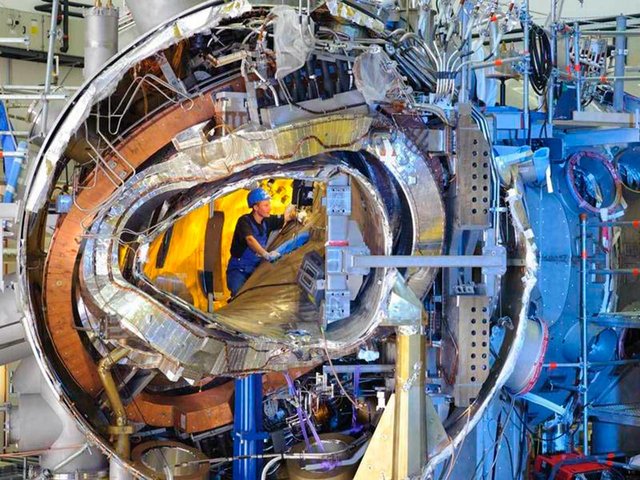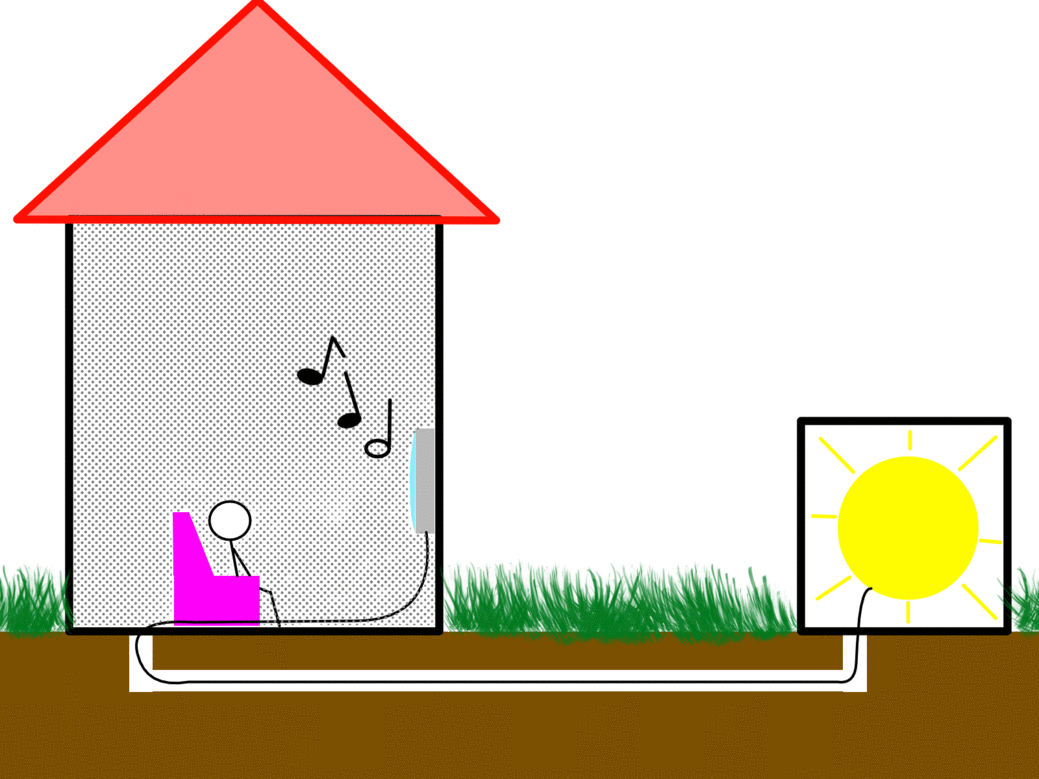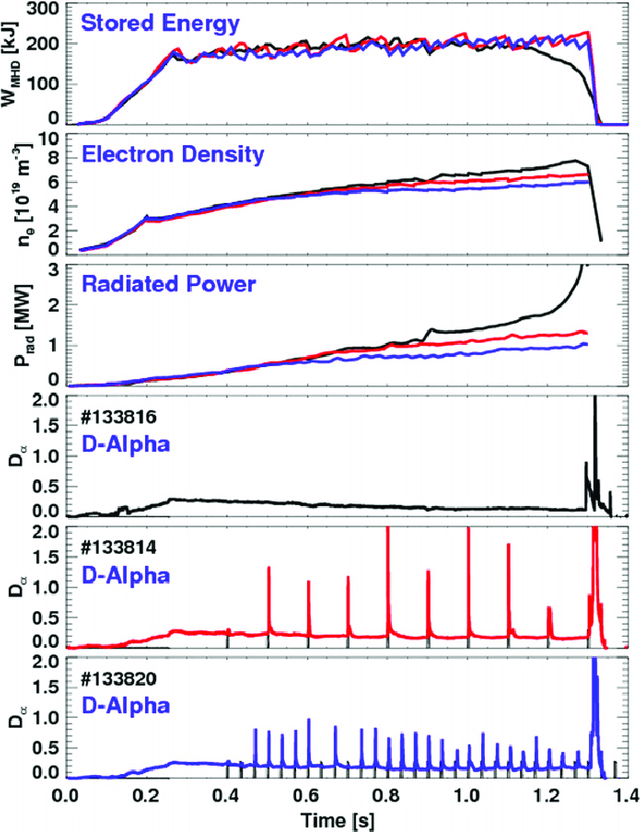A: Are stellarators alternatives to tokamaks?

So I have to admit something before I begin. Stellarators are insanely more difficult to study as compared to tokamaks and I am no expert on stellarators so please forgive me if I am not as rigorous as I usually am. Also this will not be a direct part of my Guide to Fusion as I felt I am not confident enough in my knowledge about them. But I am willing to incorporate them as an appendix section.
If you have not yet checked out the Guide and you enjoy my content please consider reading it. The post I am refering you is older than 7 days so there is no real point in upvoting it, but it serves as a Table of Content from which you can find your way around my Fusion posts. So, without further ado, lets start with the stellarators. Thank @lemouth for your and mine suffering.
What are stellarators and why are they so difficult?
Stellarators are in concept quite similar to tokamaks. Both of these concepts rely on magnetic fields to confine the plasma and stop it from getting in contact with the vessel wall.
To be more specific they rely on the fact that plasma particles are charged and as such they cannot escape from a magnetic field line. I have spoken about this and how it actually manifests when "observing" particles in my previous post. You can get to it by clicking on the figure to the right. To understand in a more rigorous physical sense one needs to go all the way back to middle school.
For a charged particle to leave a magnetic field line and jump to another with a slightly different density of the magnetic field it would have to change its energy. But if it is to change its energy it should either give the rest away or steal it from somewhere. This in phyiscs terms is named work - A. If you remember the definition of work, it goes something like this:
It is basically a sum of scalar products between the path of the particle and the force acting on it. If we now remember what is the magnetic force on a charge particle:
Here the ✗ is the vector product operator. The small paths ds in the definiton of work can also be written as ds = v t. If we group both equations together something becomes clear.
This the so-called triple product. If two of the vectors have the same direction in a tripple product the result is 0, which is also the case in our calculation. Because no geometry or other assumptions were made this means that the work produced by a magnetic field force acting on a charged particles is always 0. This means that the particle cannot escape a magnetic field line. But now some heresy... What if it could!
Why tokamaks are a pain in the rear and why stellarators are better!
In a tokamak machine the magnetic field has a helical shape which can be seen in the picture bellow on the left if you follow the black lines. As you can see the magnetic field not only follows the shape of the vacuum vessel (shown in blue) but also have a twist to it.

credit
This is done to induce better stability of the plasma as compared to a completely toroidal shape but it also induces a current inside the plasma. This current is good and bad at the same time. On one hand it heats the plasma because the plasma has an inherent electrical resistance. This is called Ohmic or Joule heating. But from what process does the heating actually come from? It comes from the impacts of charged particles as they collide inside the plasma. This is basically friction. If you rub your hands together they become warm. This in principle is the same process. But as @justtryme90 would say on @SteemSTEM discord therein, lies the rub!
When we were doing our calculation of the work in a magnetic field I intentionally forgot (if that even makes sense) to mention that the calculation is valid only for isolated particles. As soon as other particles are present which can interact with our chosen particle, our particle can steal some energy from the other particle and leave the magnetic field line. If it does this enough times it can impact the wall! Now that is bad.
How does this manifest in the actual behaviour of the fusion plasma, you ask! Well as you can see in the right figure you see some fuziness in the stored energy graph. The graph is color-coded so as to show three different plasma shots in a tokamak called Asdex UPGRADE. It is not the best graph and I dont really understand what is plotted but I really wanted to show you the fuzziness as it is very important to the entire story. The fuzziness is called an ELM and it is a plasma disruption that occurs because charged particles are stealing each others energy. These things are bad because plasma is not contained during an ELM and it can severely damage the plasma facing components of the reactor.
So why are stellarators that much better. Because of a simple but very elaborate fact. I direct you back to the picture where I show the tokamak and stellarator side by side. You can see that in the tokamak the plasma is mainly donut shaped which makes it quite easy to explain various processes that occur in it because of the simplified geometry. On the other hand in the stellarator case the plasma is completely disfigured. This is completely intentional. The extremely convoluted design of the superconducting coils and their placement creates a very three-dimensional magnetic field with a complex topological structure. This shape makes stellarators a nightmare for physicists as plasma physics is weird as it is and our academic life did not need three dimensions. Two dimensions present in the tokamak were plenty.
But the benefits outweigh the complexity. The weirdly shaped magnetic field has a strange property that comes from its topological structure. The plasma in it is stable. Always! This means no plasma current has to be induced like in the tokamak just to ignite the plasma. No plasma current means no ELMs!
Why dont you just scrap the tokamaks then?
While stellarators can hold a fusion relevant plasma for hundreds or thousands of times longer then a tokamak they only produce a fraction of the output power. The first reason is because ouput power is a linear function of input power. Because Joule heating acts as a powerful source of plasma heating in a tokamak and as it is absent in the stellarator you have a heavy deficit here. The second reason is size. Current stellarators are about a fifth of the size of ITER due to the fact that to produce the elaborate shape of the magnetic field the coils must have a weird shape. To produce non-planar weirdly shaped supercondunctiong coils with millimeter precision is a difficult and expensive thing to do. Just look at the very first picture in this post. The cross-section of the stellarator looks as if something heavy dropped on top of it and it got squashed. This is a nightmare for the engineers to design and accountants to pay!
Conclusion
So in conclusion... Stellarators are awesome. They are super cool with insanely long plasma pulses and the technology behind it is insane. And that is the problem. The technology behind it trully is insane. But I am almost convinced that stellarators might be the future of plasma. But not yet. Maybe in a few hundred years. Until then we have to live with tokamaks. And lets face it. They are pretty cool too.


StemQ Notice: This post was originally submitted on StemQ.io, a Q&A application for STEM subjects powered by the Steem blockchain.
.gif)

Never! It's unforgivable!
I know. :( I am sorry, senpai!
Well as it turned out while I was writting the post at the end of the day I knew some things about stellarators. :D
I think the context is a bit different :p
The context would be different yes. But you must admit. You would definitly say that. :D
I do certainly say that. Probably too much! Feeling self conscious! :D
This post has been voted on by the SteemSTEM curation team and voting trail in collaboration with @utopian-io and @curie.
If you appreciate the work we are doing then consider voting all three projects for witness by selecting stem.witness, utopian-io and curie!
For additional information please join us on the SteemSTEM discord and to get to know the rest of the community!
To listen to the audio version of this article click on the play image.

Brought to you by @tts. If you find it useful please consider upvoting this reply.
Hi @maticpecovnik!
Your post was upvoted by Utopian.io in cooperation with @steemstem - supporting knowledge, innovation and technological advancement on the Steem Blockchain.
Contribute to Open Source with utopian.io
Learn how to contribute on our website and join the new open source economy.
Want to chat? Join the Utopian Community on Discord https://discord.gg/h52nFrV
Congratulations @maticpecovnik! You have completed the following achievement on the Steem blockchain and have been rewarded with new badge(s) :
Click here to view your Board of Honor
If you no longer want to receive notifications, reply to this comment with the word
STOPDo not miss the last post from @steemitboard:
Hi @maticpecovnik!
Your post was upvoted by @steem-ua, new Steem dApp, using UserAuthority for algorithmic post curation!
Your UA account score is currently 2.889 which ranks you at #11636 across all Steem accounts.
Your rank has improved 606 places in the last three days (old rank 12242).
In our last Algorithmic Curation Round, consisting of 215 contributions, your post is ranked at #52.
Evaluation of your UA score:
Feel free to join our @steem-ua Discord server
Congratulations,
you just received a 12.70% upvote from @steemhq - Community Bot!
Wanna join and receive free upvotes yourself?

Vote for
steemhq.witnesson Steemit or directly on SteemConnect and join the Community Witness.This service was brought to you by SteemHQ.com
Hi, @maticpecovnik!
You just got a 1.42% upvote from SteemPlus!
To get higher upvotes, earn more SteemPlus Points (SPP). On your Steemit wallet, check your SPP balance and click on "How to earn SPP?" to find out all the ways to earn.
If you're not using SteemPlus yet, please check our last posts in here to see the many ways in which SteemPlus can improve your Steem experience on Steemit and Busy.